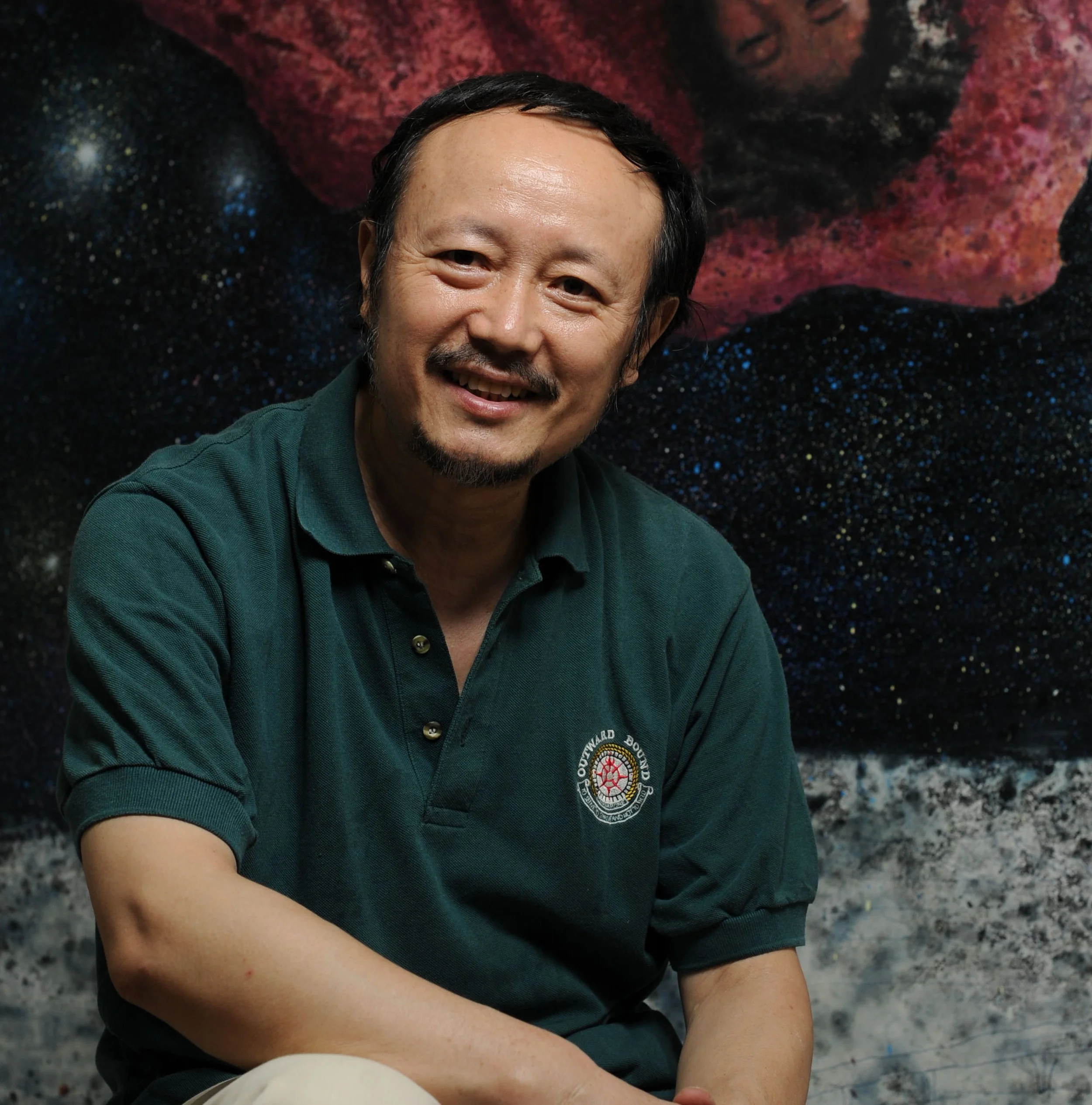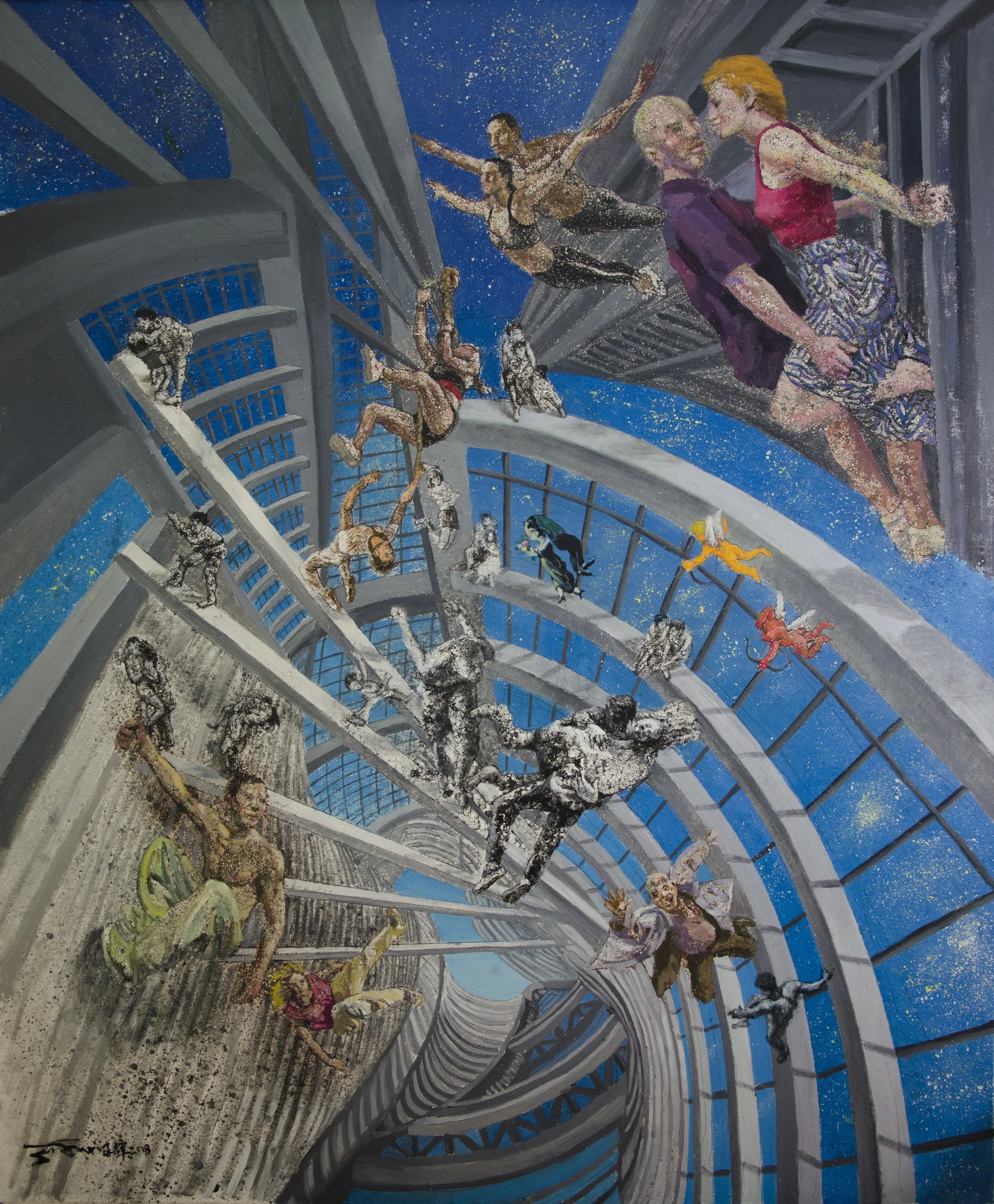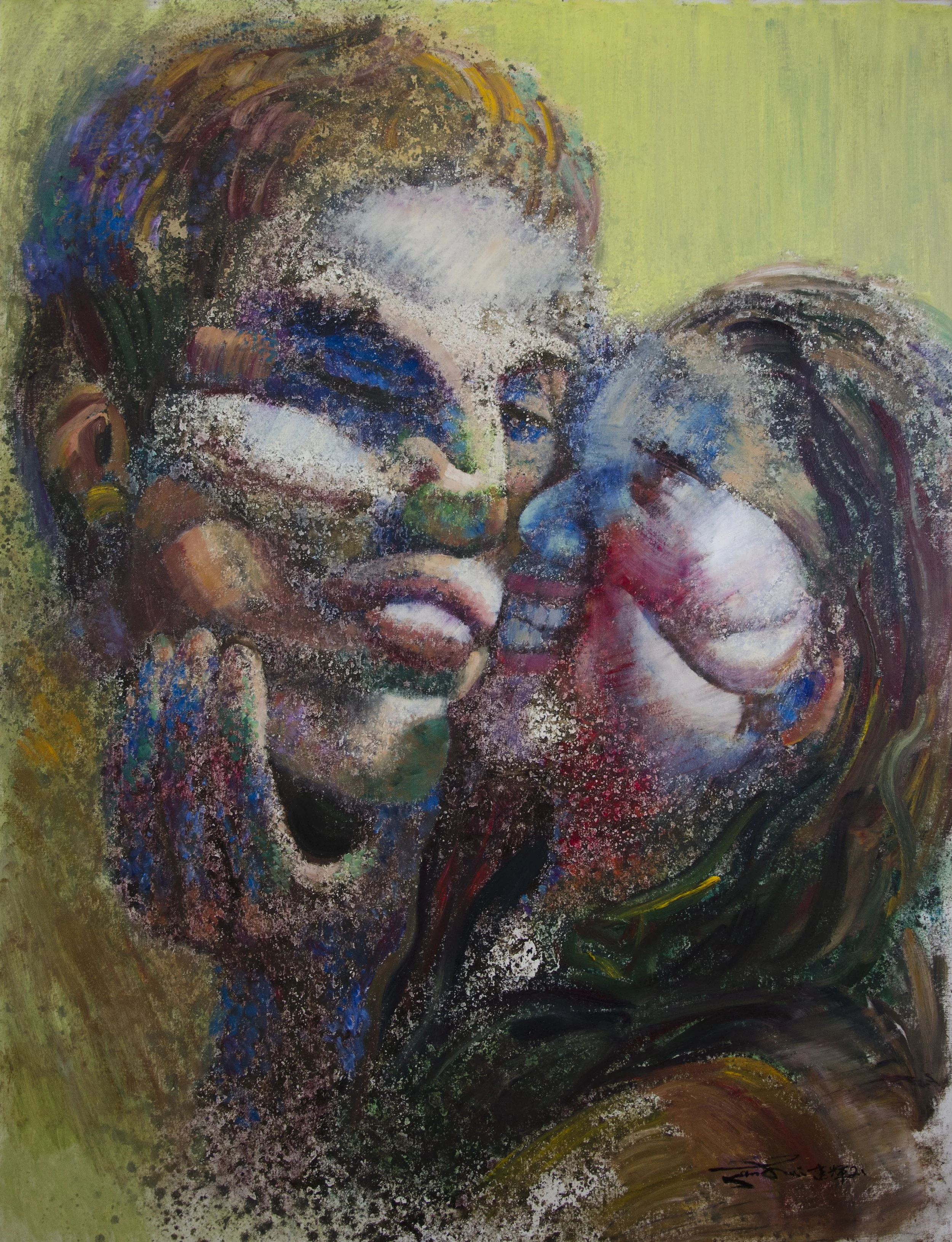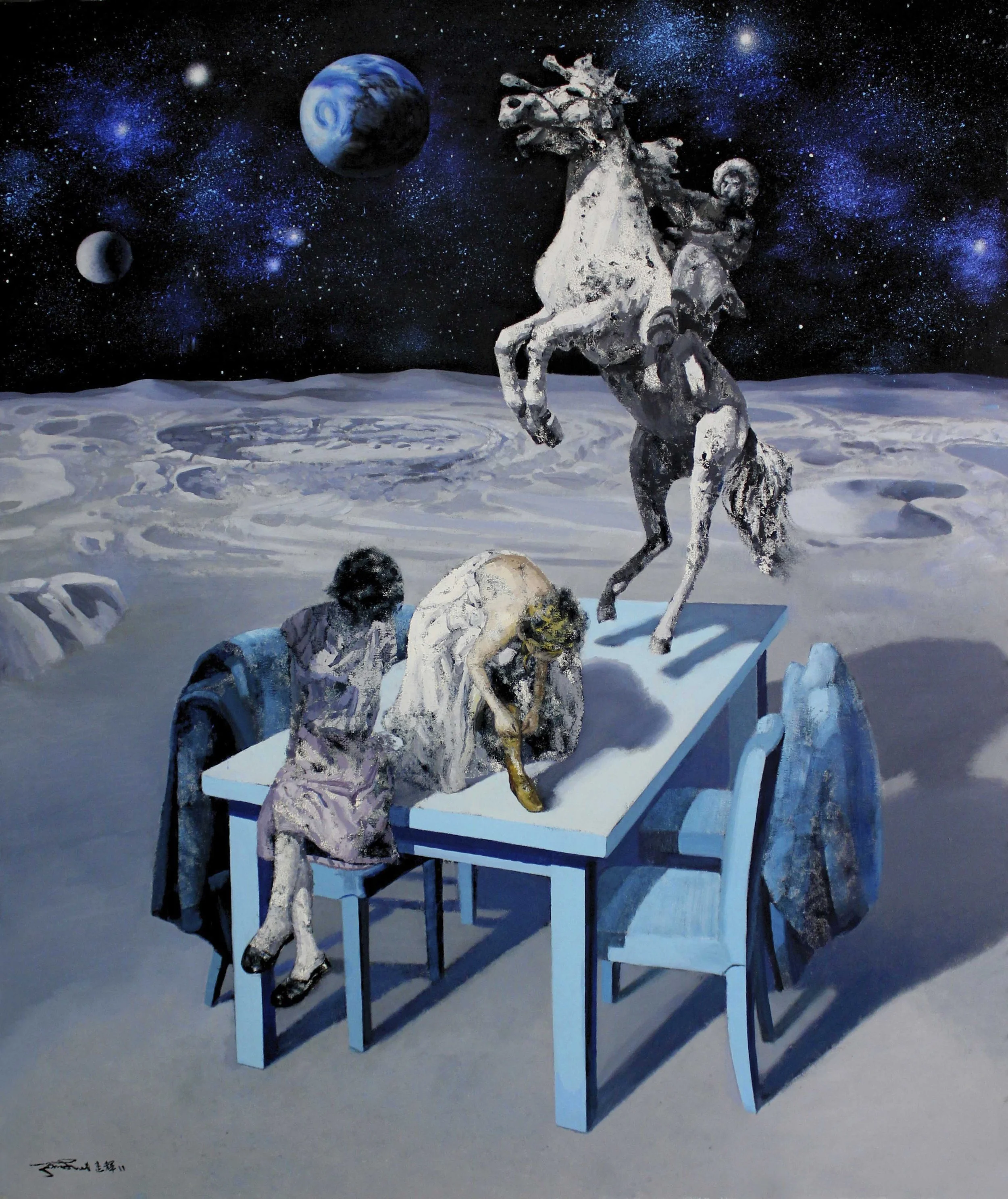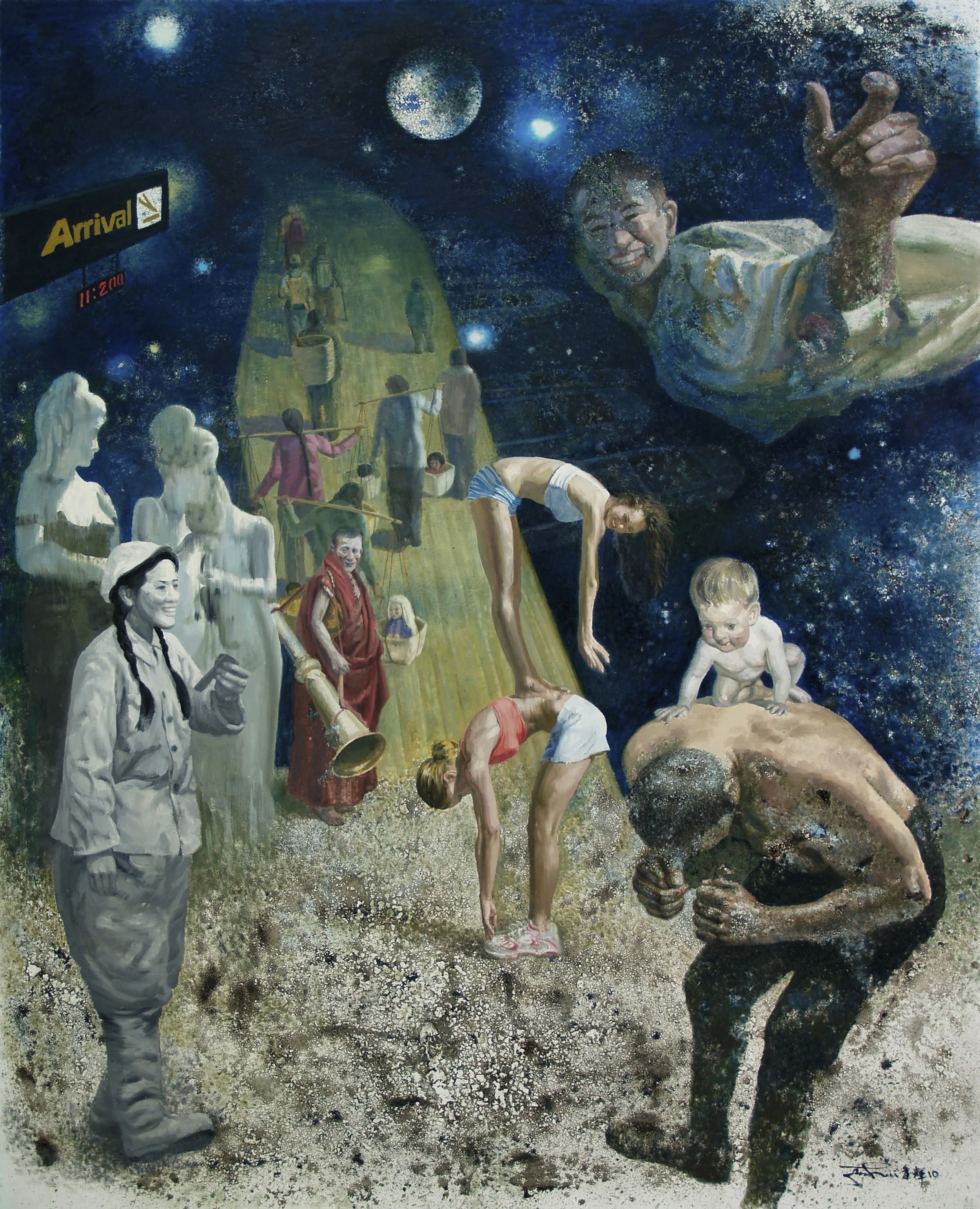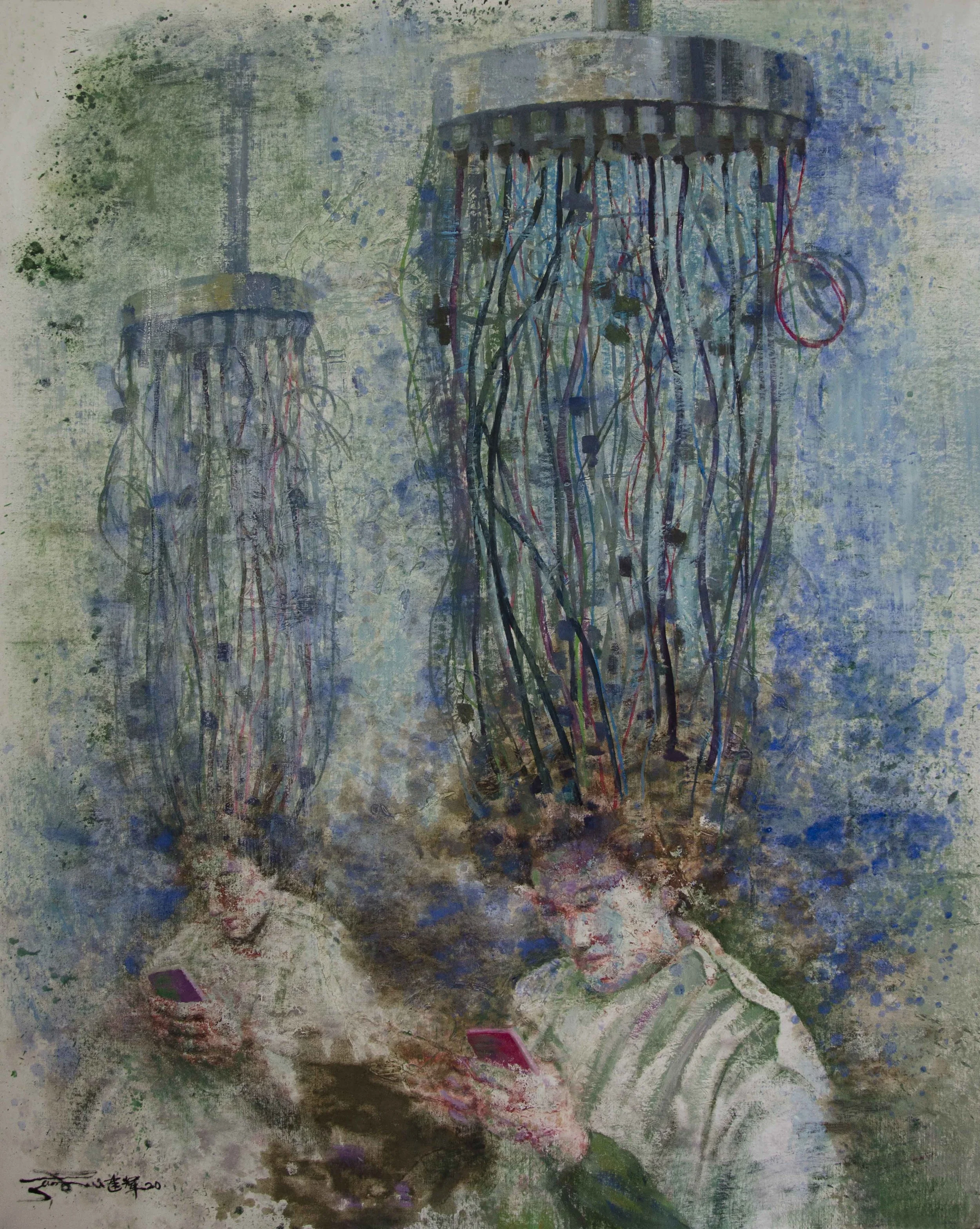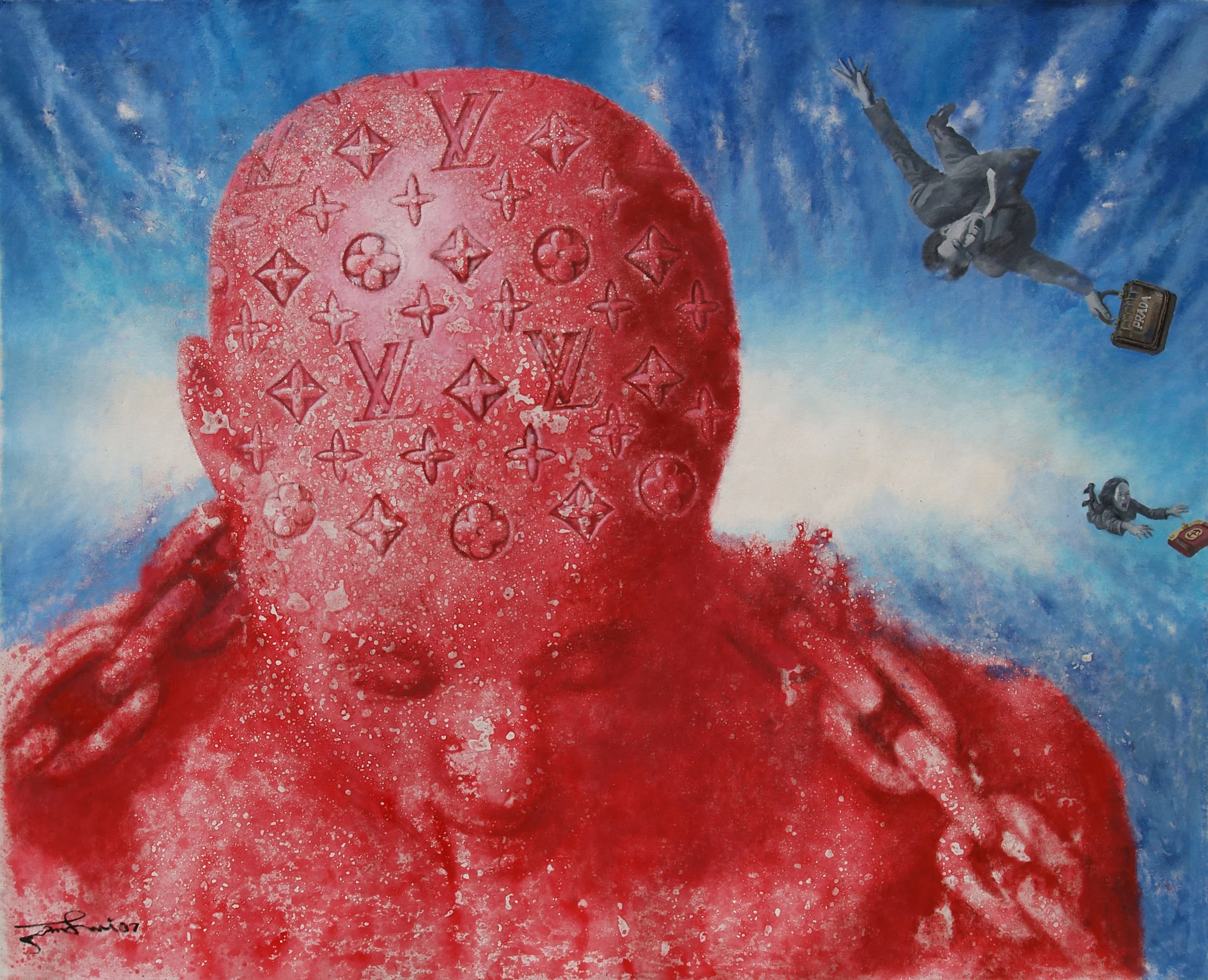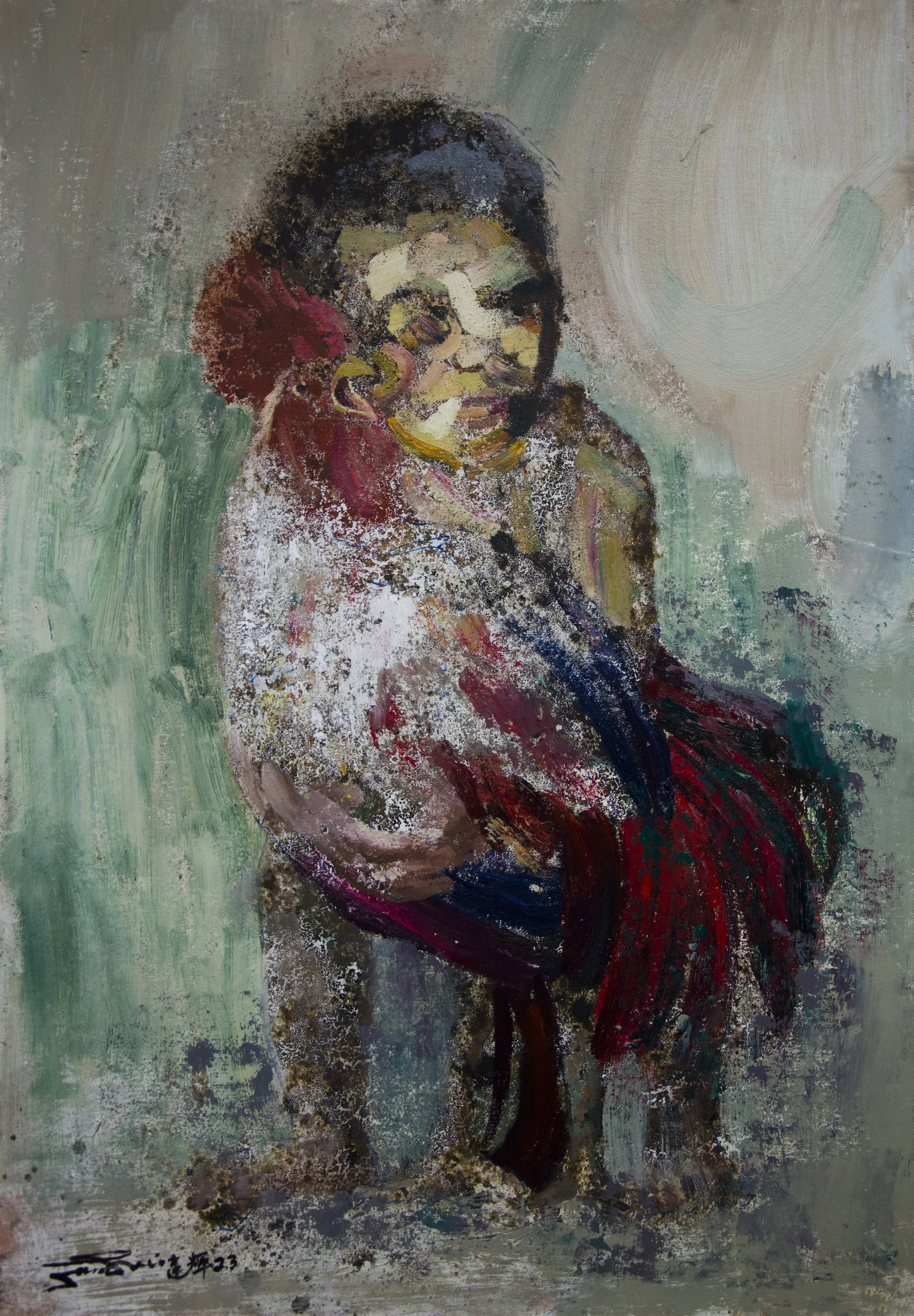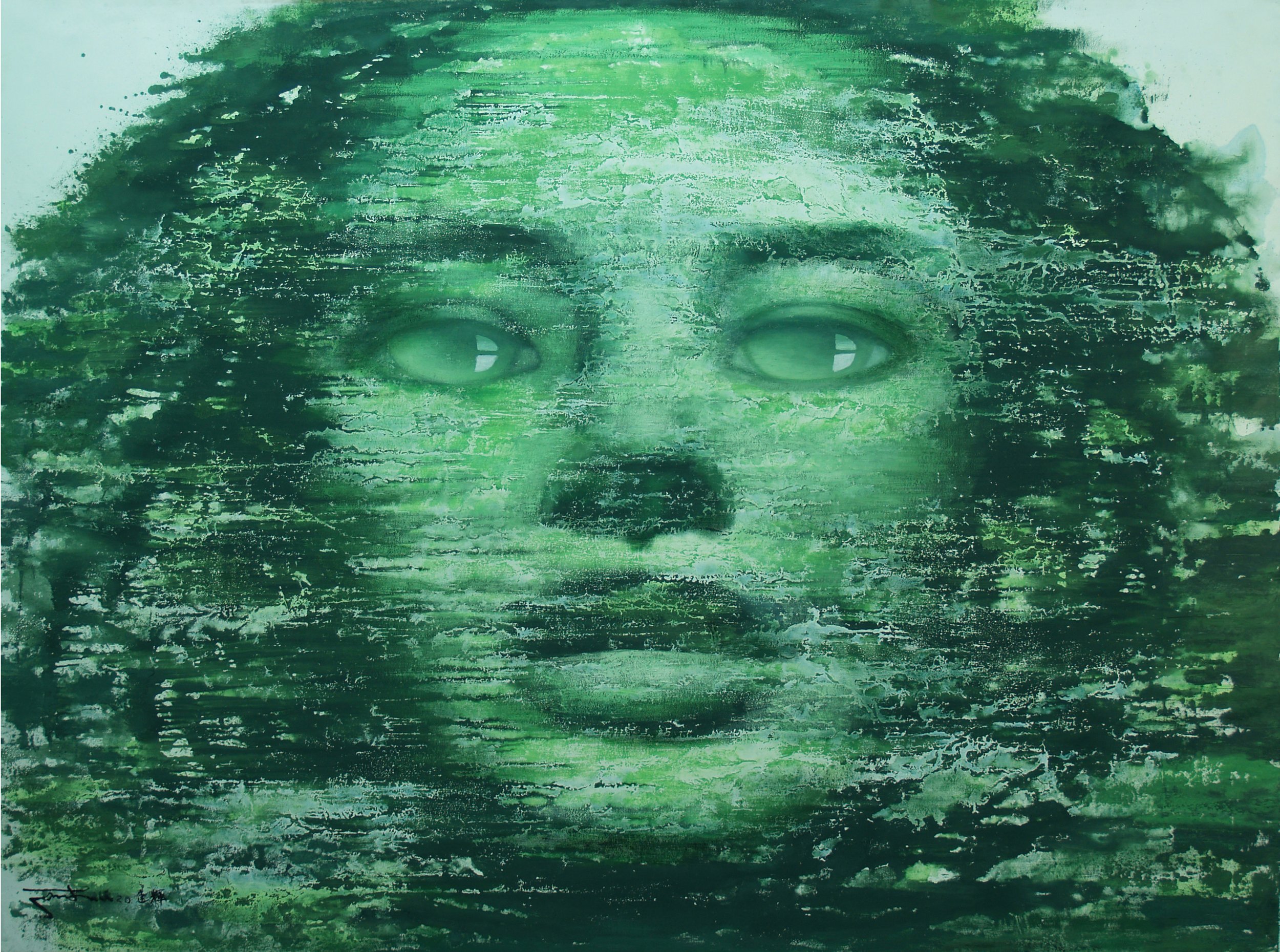Interview with Jianhui Ren
Having studied under the renowned Mr. Wu Guanzhong at the Qing Hua University Art Academy, how do you feel his teachings and philosophy have shaped your own artistic style and approach?
Mr. Wu Guanzhong is a well-known art master both at home and abroad. He strived to integrate European oil paintings with traditional Chinese art concepts. His works showed diversified expressions, skillfully showcasing his artistic brilliance in conveying "aesthetic formalism and abstract beauty" in various art mediums, such as the sinicization of oil painting and the modernization of ink wash painting. Maximizing the diverse expressiveness of Chinese painting language of "points, lines, and planes", the creation of works has developed from imagery to abstract. While continuing to explore forms, and trying to be as abstract as possible, it also strengthens the connection with objective reality by retaining concrete hints. His most fundamental artistic concept is "unbroken string of the kite". I was the class monitor in college, and had more opportunities to speak with him every time we went plein-air sketching. Once, our class went to Dayu Island to sketch. Teacher Wu was in the sleeping car. In order to attend to him, I stayed. Watching the scenery out the window, he happily shared with me the beauty of form. For example; It is said that the scenery we see is wrapped in the coat of reality. We need to use points, lines, and planes to peel off the skin, peel off the concrete appearance, extract its inner structural and formal beauty, and recombine it. With this, I gradually began to understand the essence of painting and the recombination of composition. The ability to describe features is only a means of painting, but recognizing and understanding the beauty of the depicted object and extracting the factors that constitute its form is the true essence. This has been of great help to my creations to this day. Whether it is the starting surrealism or current freehand, the formal structure is hidden within. Exaggerate and deform as needed. For true artists, this use of form requires transcending technical aspects and pursuing deeper artistic connotation and self-expression.
Being selected as one of the 'Top 60 Masters of International Contemporary Artists' is a remarkable achievement. What do you believe sets your work apart on the global stage, and how did you react to receiving such an honor?
I am very grateful to the American art magazine "Art Tour International" for its recognition, allowing me into the 'Top 60 Masters of International Contemporary Artists'. At the time, I received their email and learned that this art selection committee was selected by curatorial teams from three countries (the United States, Canada and Italy) for a year. This is a great honor and encouragement to me, and it also strengthens my confidence in oil painting creation. Especially being selected into the same edition as the famous painter Botero, I feel deeply honored."Across Time and Space" is one of my series. These empty scenes seem to have lost their reference, but they still maintain some connection with our current lives. No matter how we try to escape loneliness, the feeling stays with us every minute of our lives. Regarding existence, life, the universe, and time, everyone has a different life trajectory, and every viewer has experienced different feelings in specific instances. Facing the unconquerable nature, human beings are unable to break free from the bondage, but they always make choices between confinement and escape.
I moved, switched, and recreated using different eras, countries, and races as I pleased. They are pure mental images and imagery. What it represents is to do as one pleases. This kind of heart and intention has a refuge while being the subject of emotional and philosophical thoughts. It is cross-cultural, exploring and understanding the essence of human nature from ordinary daily life, while also paying attention to people's mental state and future. They seem to meet our eyes unexpectedly in a form that is irregular, different in time and space, and unrelated to each other, but they are actually connected as one. This is an artistic power generated by decomposition and reconstruction. The space created is not a reproduction of history, but a combination of various visual elements, creating a space that travels through time and space. There is no eternal life, but there is an eternal spirit. Life is a real existence, but it is not a true expression. What you see isn't entirely real either.
The oil paintings "Across Time and Space", "Green Wind" and "Tibet" series were selected into the 'Top 60 Masters of International Contemporary Artists' magazine, which attracted the attention of art curators. It has indeed greatly enhanced my confidence in creating oil paintings.
During your tenure at the National University of Singapore, what were some key lessons or ideas you aimed to impart to your students about art and creativity?
I taught sketching and coloring to students at the National University of Singapore. As they continued to master their modeling abilities and their understanding of colors and tones reached a certain level, I would begin to recommend some world-famous paintings to them, read up on a centenary of modern painting, and learn about these masters. How do you create your own unique style? From early classical realism to impressionism, surrealism to cubism, expressionism to abstract painting and installation art. Appreciate the story of a famous painting, see the world of a heart, and taste the spiritual language, beauty and eternity of the masters. It is also recommended that students read some philosophical books, such as Hegel, Plato, Schopenhauer, Nietzsche, Freud (psychology), etc. Learn the wisdom of philosophical masters and accept all kinds of cause and effect, movement and stillness, form and connotation. Inspire students' imagination to create their own painting language. Of course, it is not easy to create your own style, and it may take them many years of hard work.
Could you elaborate on your personal philosophy when it comes to creating art and how it has evolved over the years?
This world I depict in my art is without pollution, a world separated from the world of mortals. "Fame and fortune" is no longer the goal pursued, but striving for peace of mind. Being content with oneself, yearning for spiritual independence, being carefree and living freely in one's own way is "happiness". Being "successful" but unhappy is the greatest failure. In a world without pollution, there would be no pain, no shame, no honor, and no need to climb up the social ladder. Like a speck of dust, floating in this vast universe. Behind the seeming rationality, there is a big dream with no end. Everything appears in dreams, and everything passes by like floating clouds, unable to aggregate and settle.
I focus on expressing the fluidity of time and life, dreams, memories and associations. Time keeps flowing, and life is changing and growing. While experiencing the most fundamental and common aspects of life such as life, death, and subconsciousness, it also expresses thoughts on life, the universe, and time. We often have a sense of loneliness and death. This may be the complexity and perishability of life. Life is multifaceted and changeable, endless and infinite. —The antagonistic relationship between man and nature, the relationship between people... facing the eternal theme of "life, existence, death"... focusing on personal, social, and environmental changes, and showing how death recreates people's state of existence. It conveys the nostalgia for the past, the confusion caused by the rapid changes in society, and the hope for a new life. Desire to liberate us from the tedious life, so that we can feel peaceful and feel our own existence. There is a response to the complicated external changes in the work, and there is also a desire to listen to the inner voice. What is ultimately felt is eternal existence.
These empty scenes seem to have lost their reference, but they still maintain some connection with our current lives. No matter how we try to escape loneliness, the feeling stays with us every minute of our lives. Regarding existence, life, the universe, and time, everyone has a different life trajectory, and every viewer has experienced different feelings in specific instances. Facing the unconquerable nature, human beings are unable to break free from the bondage, but they always make choices between confinement and escape.
Where do you usually find inspiration for your artworks, and how do you translate these inspirations into your unique artistic language?
I was born in Chengdu, which is relatively close to Tibet. When I was in middle school, I often went to Tibet with my friends. The simple and honest character of those Tibetan people left a deep impression on me. In order to express that rough effect, I created a mottled painting language. Gradually, I became more and more proficient in this method. I also added some splash-ink freehand brushwork of Chinese paintings, as well as integrating the thickness and rich colors of Western oil paintings. Together, something unexpected happened, resulting in 10 series created over 30 years. The most painted series are the "Soul of the Plateau - Tibet" series, the "Samsui women of Singapore" series, the "Disappearing Industry" series, the "Green Wind" series, the "Across Time and Space" series, the "Lovers" series, and the "Truth of the Soul" series. These express the living conditions of local Singaporeans. These series have generated a lot of interest among collectors.
My latest series "The Truth of the Soul" is inspired by the "Tao Te Ching", which means that "yin and yang" are integrated. Neither the yang side nor the yin side can exist alone without the other side. Showing her pursuit of the body and her obsession with lust, the girl nestled in the man's arms, as if she wanted to integrate her body and mind into his body. Corresponding to men and women, they are in love, attract each other, fall in love and get married. The love between a man and a woman is the instinct to explore oneself. This passionate eruption leads to the fierce entanglement of souls, expressed in heavily distorted and strained faces. The intense distortion and exaggeration of the objective world is the truth of the soul. All kinds of encounters in the human world are nothing but the essential phenomena of nature. Love is the eternal theme of art. The light of life, the fire of desire, and our souls have changed into symbols to express our inner feelings, which are strong and hot. Revealing the painful struggle of existence and human nature. After fervent grating, the soul can be squeezed out. As one feels the passionate lovers, one's eyes seem to be able to look deeper, past the surface to one's own heart.
Our souls symbolize our inner passions, showcasing the bitter struggles and humanity of survival. A viewer can almost delve even deeper like an X-ray and relate to the passion in their own hearts. It is an alternate depiction of emotions through bodily distortion. “Viewing not only with sight but through stimulation of the nerves.”
I have a strong belief in the power of images, which can grasp the sublimation of the spirit. Applying these images and layered structures of ideological structures to images of contemporary essences can more easily express themes. It expresses what "thinking" is, what is alive, what is existence, what is eternity, and what is permeated with "spirit". Technology and style are just secondary elements, manifestations of the work's existence, serving the real power of the work's attainments.
This kind of combination has gotten rid of "traditional realistic symbols", "photorealistic symbols" and "magic realistic symbols". The so-called "traditional realism" is only the relationship between "copy" and "original" (Although there may seem to be copies, the imitations are genuine). And "photorealism" is comparable to the effect of photos, or even more detailed than photos. It is in the primary stage of "seeing mountains as mountains and water as water". "Magical reality" distorts reality more than it appears on the surface, is more real than pure naturalism, and its expression is already sublime. It can be understood as a higher level of "seeing mountains that are not mountains, seeing water that is not water" (magical realistic portrait). What I want to embody is "simulation" with verisimilitude, which originates from nature but is higher than nature; comes from life and is higher than life. Let the "landscape" return to its original appearance and see the true "reality". A return to: "seeing mountains as mountains and water as water". It eventually becomes irrelevant to any reality and is its own pure realization.


